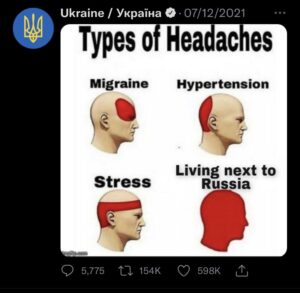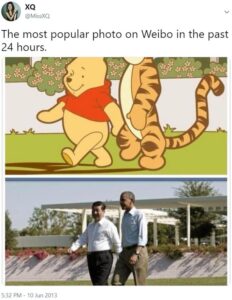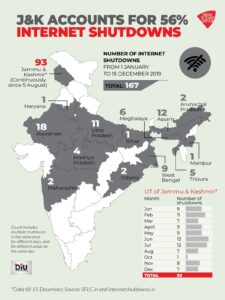
If you have ever been on the internet, which probably everyone pretty much has unless you have been living under a rock, you know what memes are. They appear on your Instagram, Facebook, Reddit and Tumblr feeds every once in a while- and while some only tickle your funny bone for a while, others stay with you long after the laughter has faded.
With the growing popularity of memes even the Oxford Dictionary felt necessitated to keep up with the time and include the word officially during the 1990s. It defines a ‘meme’ as “an image, video, piece of text, etc., typically humorous in nature, that is copied and spread rapidly by internet users, often with slight variations.” However, existence of the word precedes the internet- as it was coined in 1976 by Richard Dawkins who defined it as “melodies, ideas, catchphrases or bits of information that leap from brain to brain through imitation, expediting their transmission.” Therefore, memes have been much more than just a humorous piece of text or image, but rather a manifestation of an idea that transmits from one person to another, creating a shared human culture.
It is this feeling of shared human culture that gives every ‘meme’ a more serious dimension. It plays on the relativity factor; you like a meme because you relate to it and find it funny according to your present situation. Take this example: a person with ADHD will find humour in a meme directed at people with the syndrome, and will bind it with other people who share the same issues as them, creating a microcosm in the digital world. It, in a way, creates a community of people with a shared taste of humour- one of the main reasons for the growing popularity of ‘meme pages’ that create and publish these memes on social media applications. People follow the pages and consume the content they create, and bond with others over it.
While internet memes create a micro-community, they also work on a macro-level, since it serves information in a funny manner to audiences across the globe. Memes are created on topics socially relevant across the globe during a point of time, making it a way of propagating news to diverse sets of people. In this dimension, serious issues are masked in humour to reach larger amounts of people thereby giving memes a serious political character. For instance, memes posted by the official twitter account of Ukraine saw more engagement with their cause than text-heavy news clippings depicting their political turmoil. People interacted with these memes, or better labelled as political ‘satire,’ to produce more anger than laughter at the present situation. The anger produced through these memes therefore stayed with them for much longer than any news article had. These satirical memes are not always aimed at inducing anger in the recipient, but sometimes plain thought-provoking. These thought-provoking or anger-inducing memes, however, function in a very grey area as to what could pass off as a joke, or what could not. Memes on sensitive topics such as gun violence in America, instances of racism, ethnic appropriation or even homophobia are more often than not well received by people who believe some things to be best left out of the boundary of everyday jokes. The upside to this kind of objectionable satirical memes is that it makes one uncomfortable by raising important questions and is funny only because actually, it is not.
For instance, memes posted by the official twitter account of Ukraine saw more engagement with their cause than text-heavy news clippings depicting their political turmoil. People interacted with these memes, or better labelled as political ‘satire,’ to produce more anger than laughter at the present situation. The anger produced through these memes therefore stayed with them for much longer than any news article had. These satirical memes are not always aimed at inducing anger in the recipient, but sometimes plain thought-provoking. These thought-provoking or anger-inducing memes, however, function in a very grey area as to what could pass off as a joke, or what could not. Memes on sensitive topics such as gun violence in America, instances of racism, ethnic appropriation or even homophobia are more often than not well received by people who believe some things to be best left out of the boundary of everyday jokes. The upside to this kind of objectionable satirical memes is that it makes one uncomfortable by raising important questions and is funny only because actually, it is not.
Although, isn’t this trend of masquerading political satire as memes the opposite of what it is supposed to actually define? The answer is- No. What makes a meme is inherently the ‘viral’ nature they spread in, and those based on current socio-political events spread faster than any other joke on an image template, as it unites people for a common cause. Not only that, in places where other forms of dissent are effectively suppressed, memes somehow escape the watchful scrutiny of the powerful, serving as a tool for the powerless, voice for the voiceless.  This was displayed in the presidential tenure of Donald Trump, who became the face of multiple memes not only during but also after his tenure due to his erratic policies, and well, personality.
This was displayed in the presidential tenure of Donald Trump, who became the face of multiple memes not only during but also after his tenure due to his erratic policies, and well, personality.
This opens another line of questioning- if memes can be powerful tools of uniting people against political establishments, don’t those in power repel it? The answer for this, on the other hand, is YES. While it is difficult to identify the political memes and separate it from those intended for pure comedic purposes, it is not impossible, and people in power try their best to suppress the memes that can potentially cause danger to them via the use of censorship.  Censoring is done through banning entire apps that cause the spread of propaganda through the means of memes, or through a narrower method of banning the accounts that often upload these. China, again, does not allow apps such as WhatsApp and Instagram in their territory to ensure strict surveillance of what content people are consuming. It instead urges people to use domestic counterparts of these apps, which in turn prove to be much easier to control.
Censoring is done through banning entire apps that cause the spread of propaganda through the means of memes, or through a narrower method of banning the accounts that often upload these. China, again, does not allow apps such as WhatsApp and Instagram in their territory to ensure strict surveillance of what content people are consuming. It instead urges people to use domestic counterparts of these apps, which in turn prove to be much easier to control.
Social media apps themselves engage in tight censorship in cases where they deem fit an intervention. Blocking memes that include content potentially harmful to their consumers, they automatically engage in censoring content that does not fit into their guidelines. Instagram, for instance, has a censorship guideline that automatically blocks all posts that include nudity or sexual content, severely restricts those with contents of violence and adds warnings to posts with triggering contents. This kind of censorship is aimed at protecting its customers from what they might feel is ‘detrimental’ to them; however, many political memes bear the brunt of these censorship guidelines and get taken down before they reach their target audience.
This kind of control was specifically useful in times of the pandemic, when memes became a source of not only information, but also misinformation. For example, people who deemed vaccination ineffective against COVID-19 spread their message via memes targeting those who got vaccinated, therefore prompting social media sites to flag posts with content detrimental to public health and safety (you might have seen the COVID-19 vaccination warnings and the links to WHO’s website every time you mentioned a key word relating to the pandemic). This censorship also tries to curb the use of humour or memes to specifically target a community of people- such as memes with extreme racism or homophobia. This ensures that memes do not serve as a tool for online bullying- where the joke is at someone else’s expense.
 Another method of censorship is one extremely prevalent in our country. Here, there is no direct censoring of the content consumed by the masses, but the information available to them is controlled in real time. This is done by cutting off the data access of places with conflict- popularly in Kashmir and more recently in Manipur, thus ensuring control over information that circulates from areas of conflict, and against the establishment in power. The information supply therefore remains cut-off from the meme trends in the country, thereby never making it to the mainstream.
Another method of censorship is one extremely prevalent in our country. Here, there is no direct censoring of the content consumed by the masses, but the information available to them is controlled in real time. This is done by cutting off the data access of places with conflict- popularly in Kashmir and more recently in Manipur, thus ensuring control over information that circulates from areas of conflict, and against the establishment in power. The information supply therefore remains cut-off from the meme trends in the country, thereby never making it to the mainstream.
The fact that important political institutions across the globe believe it is important to censor or engage with memes shows how important and indispensable it is when one has to make a strong statement and reach a wider audience of people. Political parties often use memes as a propaganda tool to spread their campaign against the opposition during major elections, and if they are targeted against the party in power, the latter might retreat by banning the post, or entire social media accounts for that matter. Memes, political satire and censorship, therefore, are in a constant tug of war with each other; while an average consumer of online content is a first row spectator to the game.

